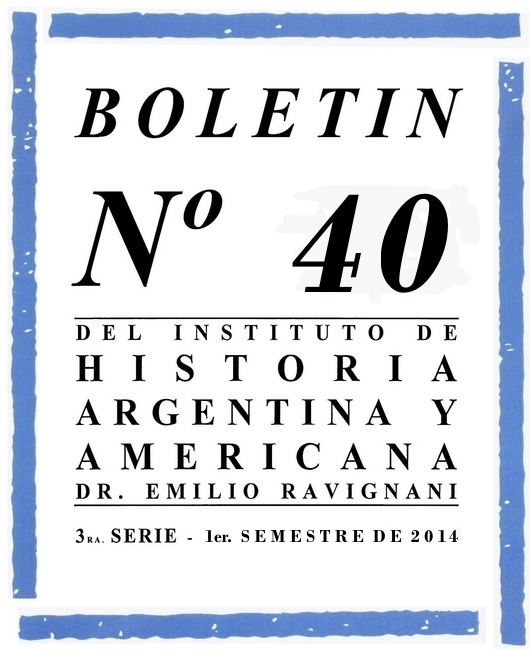INFLACIÓN, RECESIÓN Y DESEQUILIBRIO EXTERNO. LA CRISIS DE 1952, EL PLAN DE ESTABILIZACIÓN DE GÓMEZ MORALES Y LOS DILEMAS DE LA ECONOMÍA PERONISTA
Abstract
This article analyzes the economic crisis of 1952, and the implementation and impact of the “Economic Emergency Plan”. Moving away from explanations that holds up that Peronist government initiated a change of course in answer to the severe economic downturn, this article analyzes the making of the first post-war argentine stabilization plan. Based on confidential documents of the economic cabinet led by Alfredo Gómez Morales, we evaluate the essential guidelines of the program, the internal disputes over measures to be taken to deal with recession, and economic and social constraints. In this respect, the article contributes to a broader discussion of the complex linkages between peronism, “populism” and economy.Downloads
The copyright is transferred to the Boletín, but the authors may retrieve them and reproduce their work in other media or formats by means of a written request to the Editorial Committee. In such cases, the Boletín will be cited as the first publication of the work.
The works are licensed under a Creative Commons Attribution-NonCommercial 4.0 International License, which allows others to share the work with an acknowledgment of their authorship and initial publication in this journal.
Also, by written request to the Editorial Committee of the Boletín, the authors may separately establish additional agreements for the non-exclusive distribution of the version of the work published in this journal (for example, placing it in an institutional repository or publishing it in a book), with an acknowledgement of its initial publication here. No commercial uses are allowed.



















